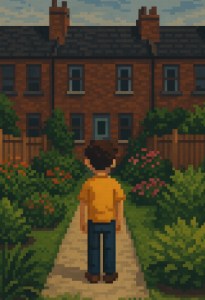
Climate Anxiety and the Future of Parenting
In British Columbia, the summer of 2021 was unlike any other. A record-breaking heat dome gripped the region, claiming hundreds of lives. Later that fall, floods washed away highways and homes. For residents like Emma, a 29-year-old nurse in Burnaby, the question wasn’t just how to cope with today’s emergencies—it was whether it was fair to bring a child into such an uncertain future.
Her hesitation is not unique. A new study published in Frontiers in Public Health shows that climate change anxiety is directly shaping people’s decisions about whether to have childrenfpubh-13-1642689. The findings highlight a powerful but often overlooked ripple effect of climate change—one that could reshape demographics, population health, and the role of public health programs.
Why This Study Matters Now
The research team from Simon Fraser University and partner institutions analyzed data from 441 British Columbians aged 16–44 with no children. Participants were surveyed through the British Columbia Climate Distress Monitoring System, which tracked mental health following major climate disasters.
Key question: Does climate anxiety influence whether people plan to have kids?
The answer, in short, is yes. People reporting higher climate anxiety were significantly more likely to say they were unsure about having children, or planned not to have them at all.
This matters because childbearing decisions are not only personal—they also shape long-term community demographics, workforce planning, and even the sustainability of the health system.
The Evidence in Brief
- More anxiety, fewer kids: Participants with higher scores on the Climate Change Anxiety Scale were more likely to be undecided or to say they did not plan on having children.
- Independent effect: This association held even after controlling for age, gender, ethnicity, education, income, relationship status, disability, and general psychological distress.
- Politics plays a role: Political orientation explained about 25% of the effect—liberal participants reported more climate anxiety and were less likely to want children.
- Not just theory: These findings align with U.S., European, and Chinese studies showing climate-related reproductive concerns are widespread.
Putting It Into Practice
For public health professionals, these findings raise critical questions:
- Population planning: Declining birth rates in high-income regions are already straining health systems and aging populations. Climate anxiety could accelerate these demographic shifts.
- Mental health services: Anxiety about the future isn’t just an individual issue—it’s a community-level stressor. Programs that normalize climate distress, offer counseling, and build resilience may help.
- Equity lens: Climate disasters hit some groups harder. People with disabilities, Indigenous communities, and low-income residents may face both higher exposure to disasters and fewer resources to cope.
- Communication strategies: Public health agencies often encourage resilience and adaptation (heat plans, flood preparedness). This research suggests messaging should also acknowledge and validate reproductive concerns tied to climate futures.
A Contrast Worth Noting
For decades, population growth was framed as a climate problem: fewer people meant lower emissions. But this study flips the narrative. The climate crisis itself is now discouraging people from having children, independent of carbon footprint arguments.
In other words: we thought programs worked best when focused on reducing births for environmental reasons. But evidence shows climate fear itself is reshaping reproduction.
What’s Next?
Policy adoption: Governments may need to incorporate climate anxiety into mental health frameworks and family planning services.
Funding implications: Grants supporting maternal and child health, mental health, or climate adaptation should anticipate how these issues intersect.
Workforce impact: Lower fertility could mean fewer young workers to sustain aging populations, a challenge for public health systems already under strain.
Research gaps: This study was cross-sectional. Longitudinal research is needed to track whether climate anxiety continues to shape decisions years after disasters.
Barriers and Challenges
- Political polarization: The study showed politics shapes both anxiety levels and family planning. Policy conversations risk being politicized.
- Financial constraints: Public health budgets may be stretched thin by immediate crises (opioids, housing, food insecurity). Adding climate anxiety to the agenda may feel like “one more thing.”
- Community trust: Addressing climate and reproduction touches sensitive values. Public health must balance empathy with respect for reproductive autonomy.
Join the Conversation
This research opens new ground for discussion across public health, policy, and community sectors. Here are questions for your team:
- How could your agency incorporate climate anxiety into existing mental health or maternal-child health programs?
- What barriers might keep this from being implemented in your community?
- Does this research challenge the way you think about prevention, resilience, and future planning?



